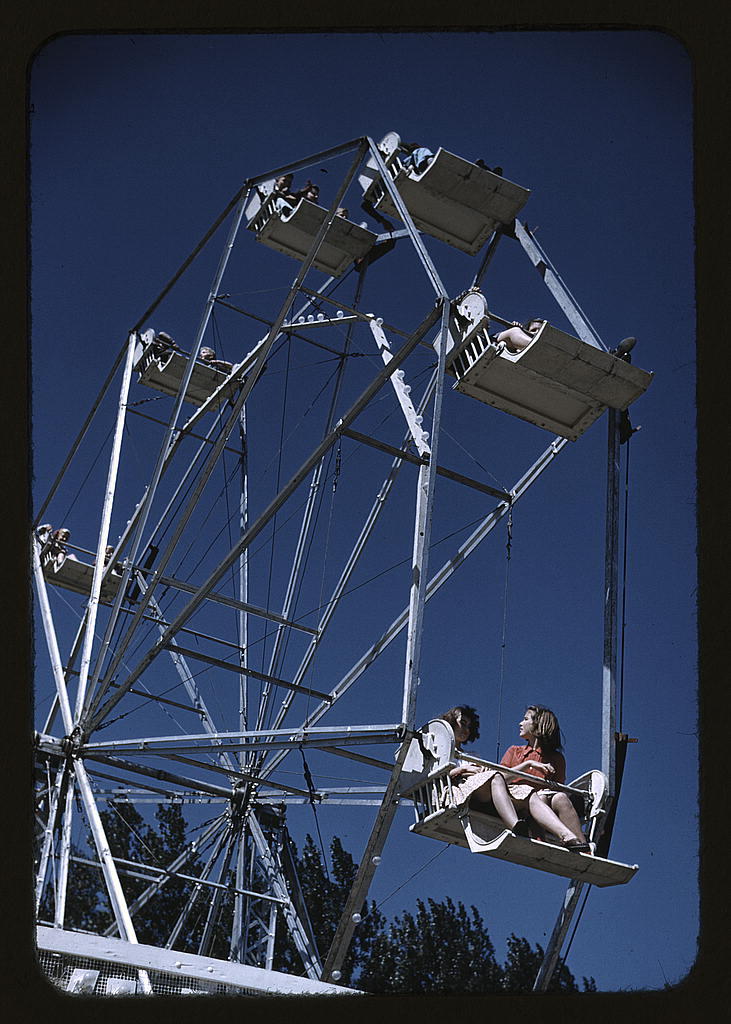
On the ferris wheel at the Vermont state fair, Rutland: photo by Jack Delano, September 1941 (Farm Security Administration/Office of War Information Collection, Library of Congress)
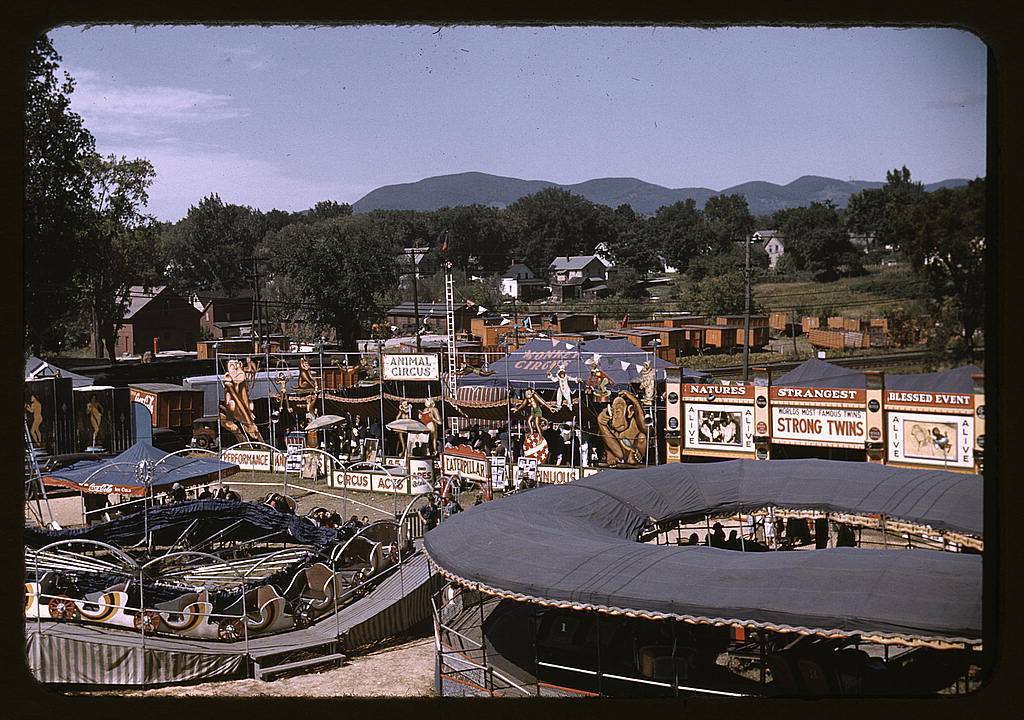
View of the grounds of the Vermont state fair, Rutland: photo by Jack Delano, September 1941 (Farm Security Administration/Office of War Information Collection, Library of Congress)
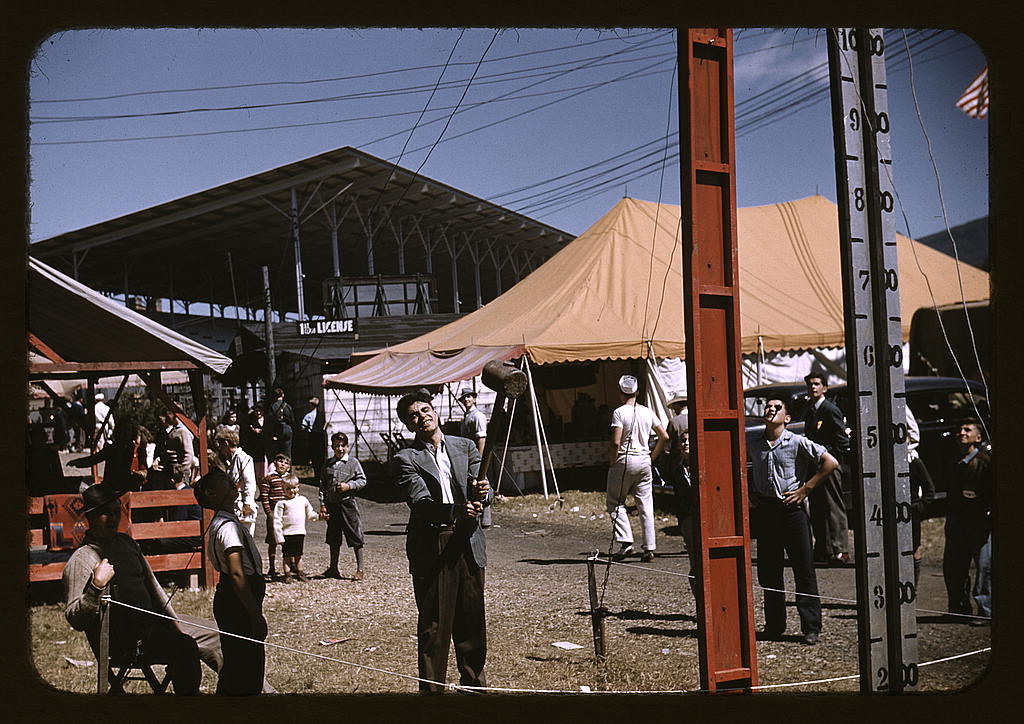
At the Vermont state fair, Rutland: photo by Jack Delano, September 1941 (Farm Security Administration/Office of War Information Collection, Library of Congress)
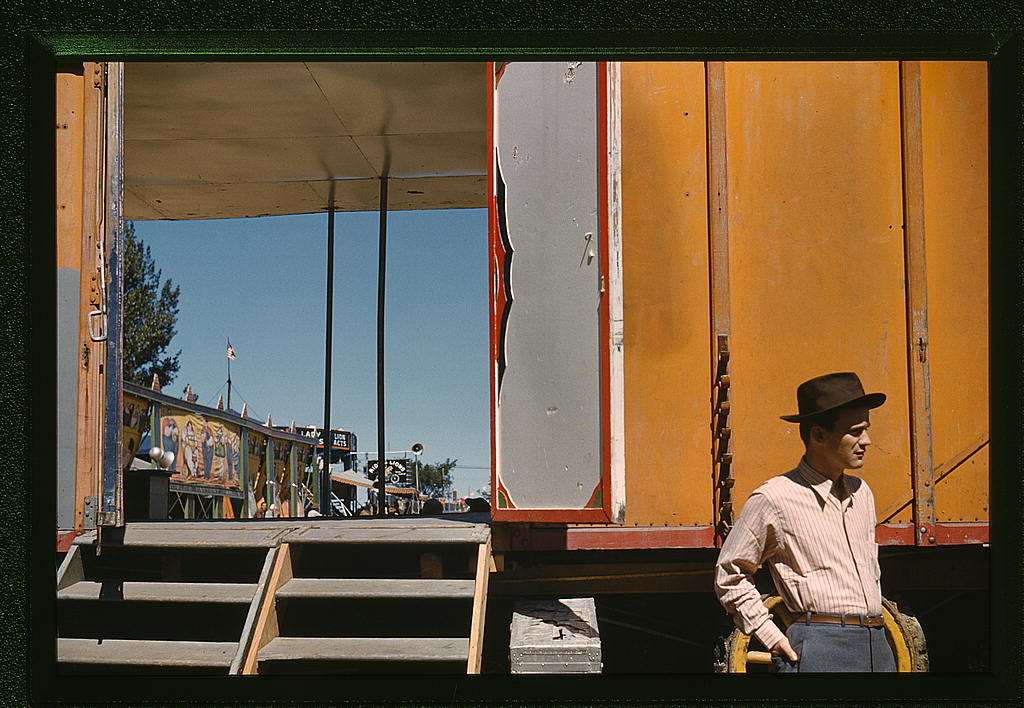
At the Vermont state fair, Rutland: photo by Jack Delano, September 1941 (Farm Security Administration/Office of War Information Collection, Library of Congress

"Backstage" at the "girlie" show at the Vermont state fair, Rutland: photo by Jack Delano, September 1941 (Farm Security Administration/Office of War Information Collection, Library of Congress)
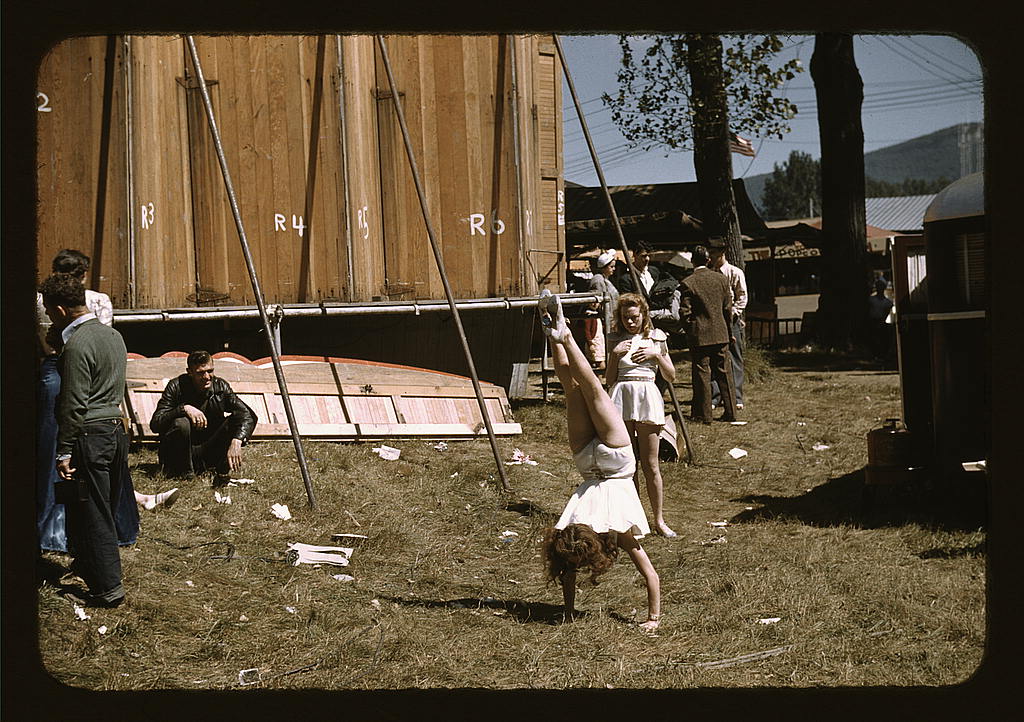
"Backstage" at the "girlie" show at the Vermont state fair, Rutland: photo by Jack Delano, September 1941 (Farm Security Administration/Office of War Information Collection, Library of Congress)
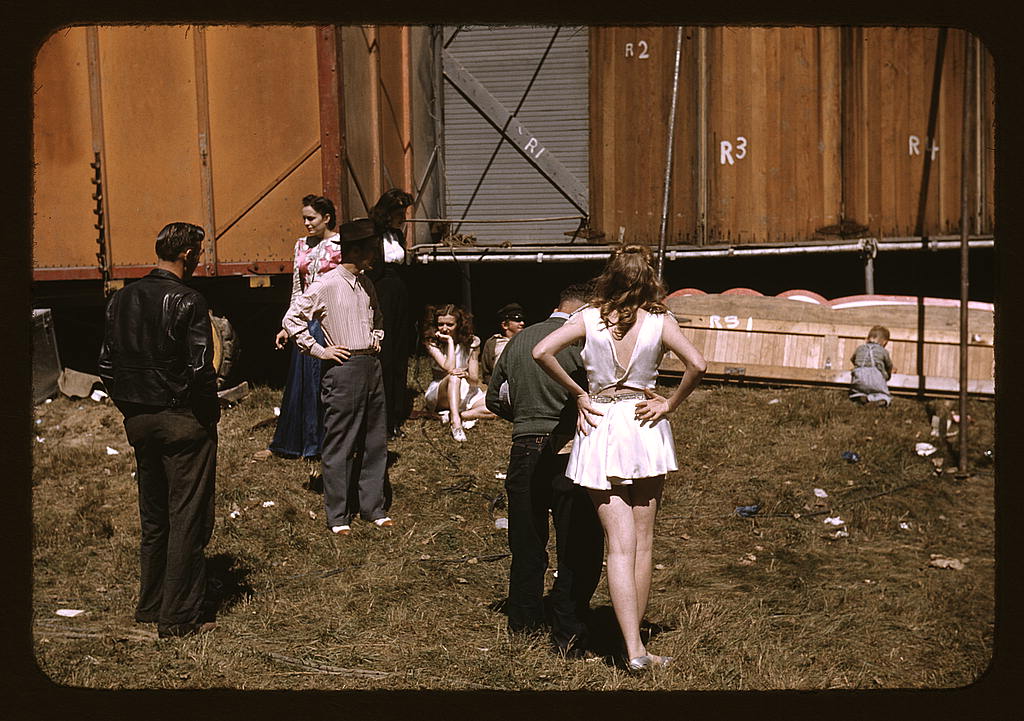
"Backstage" at the "girlie" show at the Vermont state fair, Rutland: photo by Jack Delano, September 1941 (Farm Security Administration/Office of War Information Collection, Library of Congress)
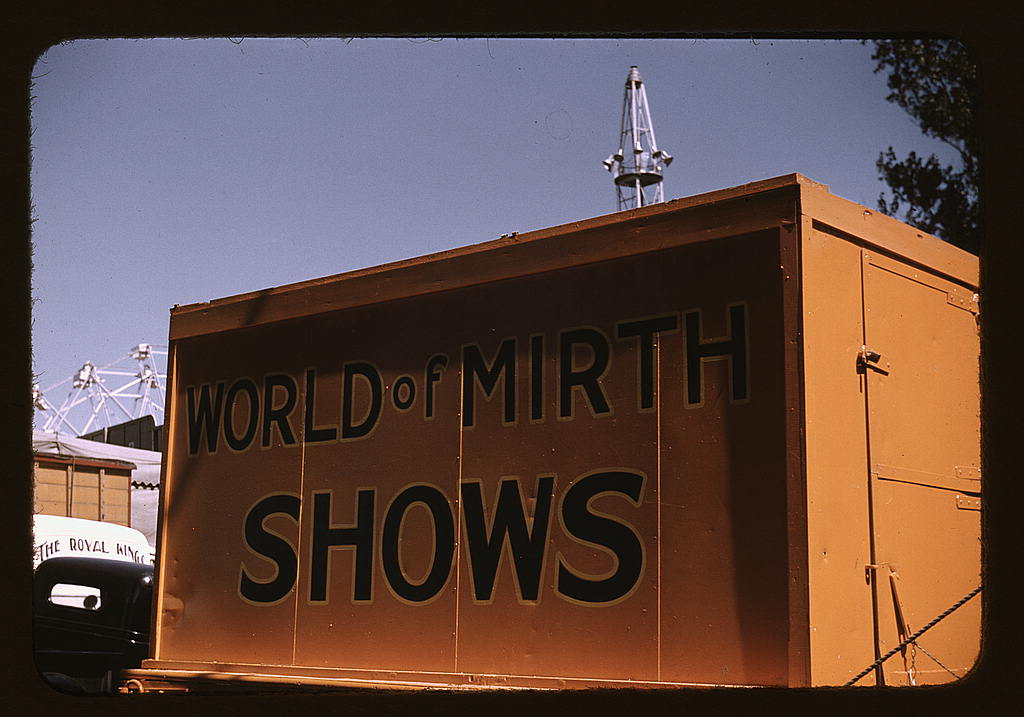
Side show at the Vermont state fair, Rutland: photo by Jack Delano, September 1941 (Farm Security Administration/Office of War Information Collection, Library of Congress)
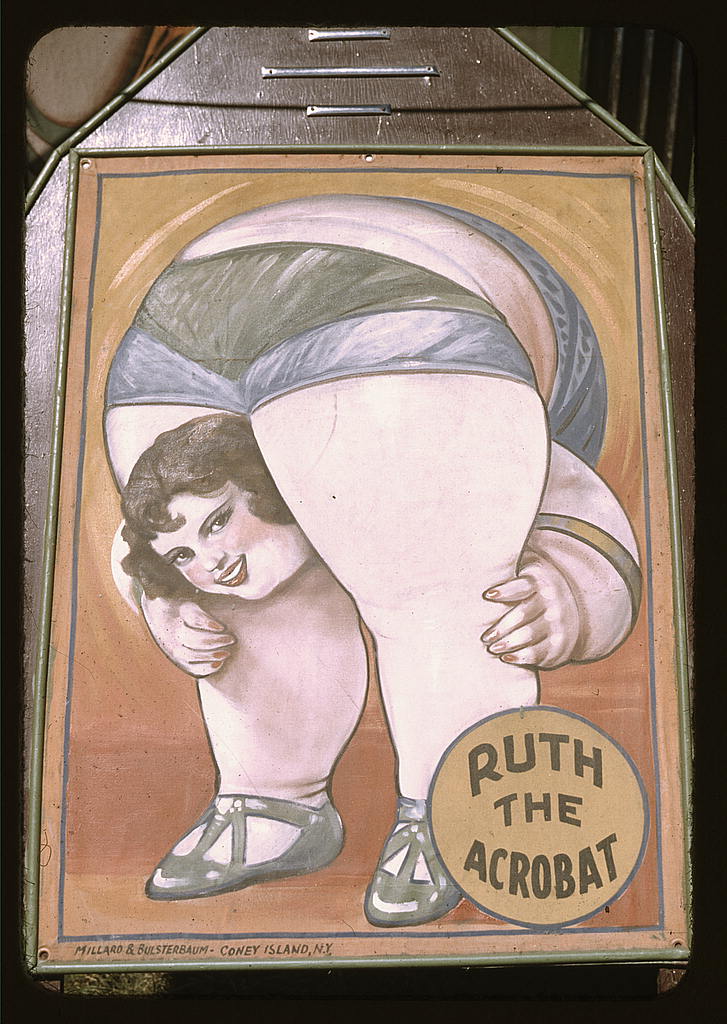
Poster for a side show at the Vermont state fair, Rutland: photo by Jack Delano, September 1941 (Farm Security Administration/Office of War Information Collection, Library of Congress)
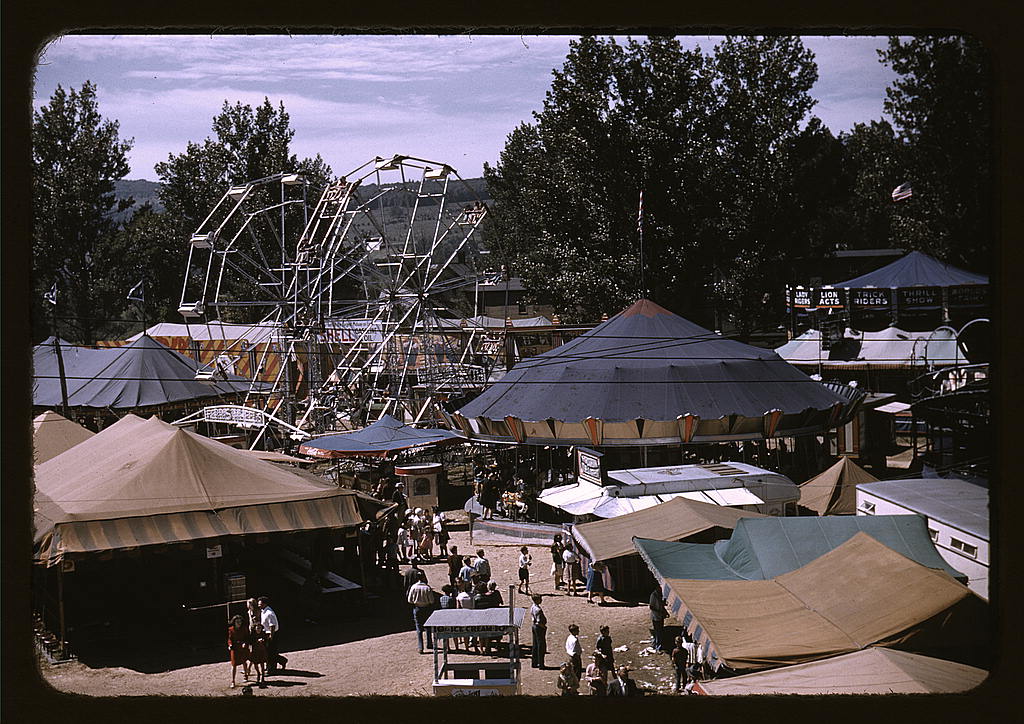
Side shows at the Vermont state fair, Rutland: photo by Jack Delano, September 1941 (Farm Security Administration/Office of War Information Collection, Library of Congress)
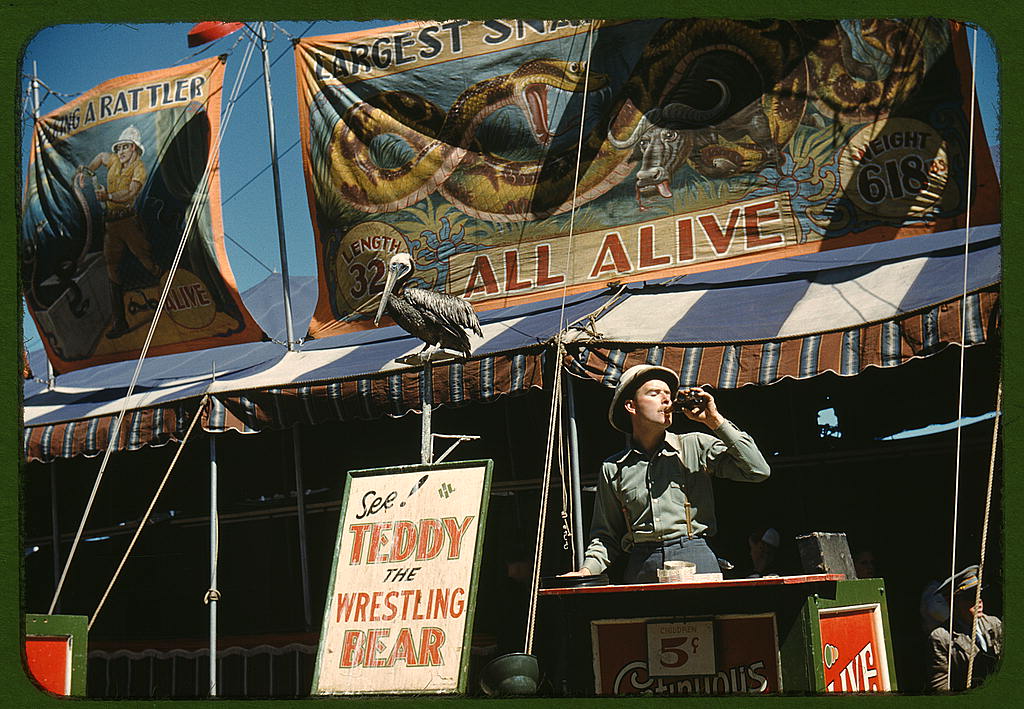
Barker at the grounds of the Vermont state fair, Rutland: photo by Jack Delano, September 1941 (Farm Security Administration/Office of War Information Collection, Library of Congress)

Barker at the grounds of the Vermont state fair, Rutland: photo by Jack Delano, September 1941 (Farm Security Administration/Office of War Information Collection, Library of Congress)

Barker at the grounds of the Vermont state fair, Rutland: photo by Jack Delano, September 1941 (Farm Security Administration/Office of War Information Collection, Library of Congress)

At the Vermont state fair, Rutland: photo by Jack Delano, September 1941 (Farm Security Administration/Office of War Information Collection, Library of Congress)

At the Vermont state fair, Rutland: photo by Jack Delano, September 1941 (Farm Security Administration/Office of War Information Collection, Library of Congress)

At the Vermont state fair, Rutland: photo by Jack Delano, September 1941 (Farm Security Administration/Office of War Information Collection, Library of Congress)

At the Vermont state fair, Rutland: photo by Jack Delano, September 1941 (Farm Security Administration/Office of War Information Collection, Library of Congress)
My favorite in this series has to be Ruth the Acrobat!
ReplyDeleteWonderful images. Thanks for sharing, Tom. Hope all is well with you...
Perhaps, but my favorite's the last not only because it shows the rapt and/or quizzical glances of children caught up in all the excitement but also for the colors their mother has chosen for them to wear: the old standard blue for the boy and pink for the girls.This was an important outing and you had to be dressed accordingly!
ReplyDeleteThanks, Jon. Good to hear from you.
ReplyDeleteI'm always interested to hear what people think about the images. We talk about them here a lot. But of course, that's just us.
Many of the photos here are like old friends, familiar by now.
One marvels anew each time at the critical intelligence of Jack Delano's eye.
For instance, in the penultimate shot, that couple at the back of their car, with a trunk full of Bliss.
Vassilis, the photo you have picked out -- the final shot, here -- is one we've discussed a lot.
The five girls in the pink dresses, that speaks volumes. The mother of the family probably bought a bolt or two of that print fabric at her local dry goods store, and made all those dresses for her daughters out of it. Daughter by daughter, as they came along and grew. It must have lasted years. And of course she would have sewn in the cuffs and collars herself.
Excuse my saying this, showing my age (yet again!), but I think people were simply a lot better at the "little things" of life in those days. And what is life made of anyway, if not all the little things?
In many ways all these postings of the FSA colour work in Kodachrome are small elegies.
The subtractive colour process that made Kodachrome possible was invented in 1935 (by two musicians, in fact).
The invention was never improved upon.
If you have good light and you’re at a fairly high shutter speed, [with Kodachrome] it’s going to be a brilliant color photograph. It had a great color palette. It wasn’t too garish. Some films are like you’re on a drug or something. Velvia made everything so saturated and wildly over-the-top, too electric. Kodachrome had more poetry in it, a softness, an elegance. With digital photography, you gain many benefits [but] you have to put in post-production. [With Kodachrome,] you take it out of the box and the pictures are already brilliant. -- David Friend
The long-term colour stability of Kodachrome is legendary.
In time, digital replaced it -- in "the market", but not as an artistic or historical material. (Ironically, digital photography was invented by an Eastman Kodak employee, around the time Kodachrome was invented.)
Kodachrome died a few years ago.
Kodachrome discontinuation notice (2009).
And yesterday, after 120 years of doing business, Eastman Kodak filed for bankruptcy.
(Was there a recoded date upon which the Renaissance ended?)
For those who care, today's Guardian has an interesting collection of Kodak memorials.
ReplyDeleteHere's one:
Kodak: A Fond Farewell
Side-links from that piece will take you to other stories, including a history of Eastman Kodak, and a small Kodachrome slide show.
In Jack Delano's day, the Kodachrome stock was greatly coveted by the FSA photographers.
Not everybody got it... and nobody got it all the time.
Hi again TC,
ReplyDeleteI had actually read the Guardian story either just before or just after my last visit to your blog, and wondered if perhaps you were working with similar things.
There is something wonderfully evocative about such images... there are at once so essentially us, and yet a world that now looks markedly different.
Hello again Jon, and yes, I've spent about 1000 hours over the past three years lurking in and learning my way around the remarkable archives of the FSA photo project. In a generally cold and disheartening time in this country, it's encouraging and inspiring to be reminded there once existed a "public spirit" of the kind reflected in these archives. And by that I don't mean a simpleminded foolish patriotism, but an endeavour to investigate reality as it was, see both the good and bad, and bring back a true living image.
ReplyDeleteIt's still a living image today. In these scenes I recognize the world into which I came. Whereas around me on the American streets today, what I see looks not only unfamiliar, but scary.
The archives contain 1600 color shots. The Kodachrome stock was not easily come by, budgets were tight, and once the war started much of the color stock was reserved for military uses.
But what does exist is brilliant, preserving a tangible, palpable reality.
I've posted quite a bit of it, and intend to post more in the future, gods willing.
The archive also contains 160,000 digitized b&w negatives, a virtually inexhaustible treasure of historical information about how life was lived in the 1935-1942 period.
Much of what I've posted can be found in the index here, under the names of the photographers: Russell Lee, Jack Delano, Carl Mydans, Marion Post Wolcott, John Collier, John Vachon, Arthur Rothstein, Arthur Siegel, Dorothea Lange et al.
Indeed just today I've put up John Vachon: The Wind and the Rain.